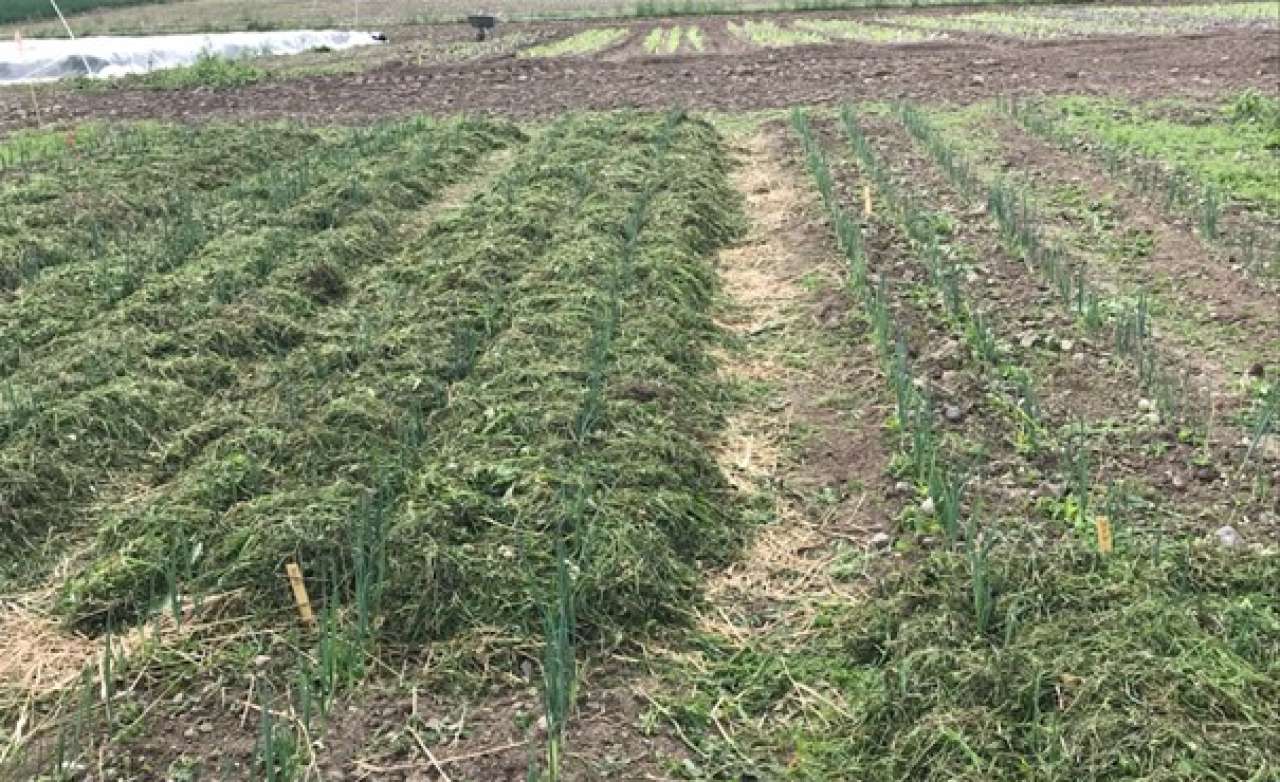Division of Food Production and Society
Mulching of organically grown row crops, for easy growing and increased farmers’ motivation – HAKKET BEDRE ØKO (“Mulch organic”)

End: dec 2023
Start: feb 2021
The project aims at increasing the production of organically grown vegetables in Norway by studying how a mulch layer of chopped plant material (mulch) may reduce weed and improve nutrient supply.
| Start - end date | 01.02.2021 - 31.12.2023 |
| Project manager | Mette Thomsen |
| Division | Division of Food Production and Society |
| Department | Horticulture |
| Partners | Norwegian Agricultural Extension Service Innlandet (NLR), NORSØK |
| Funding source | Norwegian Agriculture Agency, funds for developing organic food and farming |
There is an increasing interest for soil health and sustainability in both conventional and organic growing. Consumers want more organic vegetables, and there is a need for producing more organic vegetables in Norway to cover this demand.
Vegetable production in a professional scale requires knowledge, skills and specialized equipment. Several growers of organic vegetables are located in the area which is defined as nitrate sensitive in Norway, draining to the Oslo fjord. In this area, the maximum application of nitrogen from animal manure is 170 kg total-N per hectare and year on average for the farm’s cultivated area. This may be a severe restriction for vegetable crops production. Additionally, animal manure is often scarce in areas with vegetable farms, and commercially available fertilizer products are expensive.
Organic growing is likely to increase the weed pressure on the farm and weeding usually implies a significant labour cost. Perennial ley in the crop rotation would benefit weed regulation, nutrient supply and soil health, and we want to investigate possibly utilization of this plant material. A mulch comprised of chopped plant material may reduce weed infestation and weed growth, supply the crop with nutrients and improve the soil structure and content of organic matter. The mulch material, and improved soil structure may support the fields to cope with heavy rain with reduced risks of erosion and nutrient loss.
To recruit and maintain organic growers, practical technologies for nutrient supply and weed control are required. The project aims to increase the production of organically grown vegetables in Norway by utilizing chopped plant material as mulch in vegetable row crops. This may reduce the workload required for weeding, while the crop receive sufficient nutrients to produce satisfactory yield levels.
The project conducts field trials at fourlocatoins in 2021 and 2022 NIBIO Apelsvoll, NIBIO Landvik, NORSØK Tingvoll, and NLR Innland and cooperates with organic vegetable producers to test mulch in commercial production. Different types of plant material are tested, along with 2 or 3 application dates, and the effect of covering the mulch by a thin layer of material rich in carbon such as straw or woodchips. Using this topping may increase the nitrogen utilisation and reduce losses of N.
Publications in the project
Authors
Mette Thomsen Randi Seljåsen Hans Gunnar Espelien Andrii Volovyk Emilie Sandell Kari Bysveen Tatiana Francischinelli Rittl Anne-Kristin LøesAbstract
No abstract has been registered
Authors
Mette Thomsen Randi Seljåsen Reidun Pommeresche Till Seehusen Belachew Asalf Tadesse Tatiana Francischinelli Rittl Anne-Kristin LøesAbstract
No abstract has been registered
Abstract
No abstract has been registered
